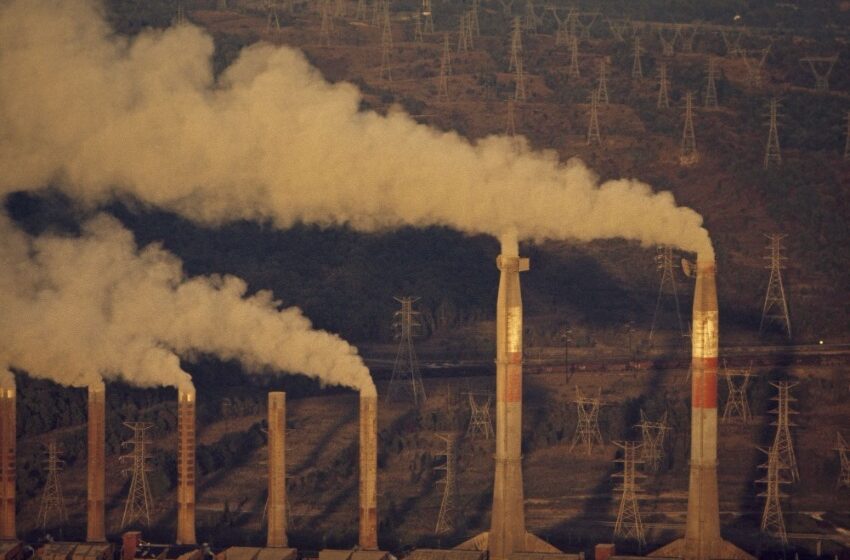
Is the ‘greenhouse effect’ in action?
The following is the 39th excerpt from “Tilting at the Monster of Morong: Forays Against the Bataan Nuclear Power Plant and Global Nuclear Energy,” which is a book that Kelvin Rodolfo is currently working on.
It’s possible that your anxiety over global warming has led you to believe that the Greenhouse Effect is something to be concerned about. But the planet manages to preserve itself at a temperature that is suitable for life thanks to this dynamic, carefully maintained atmosphere.
The Greenhouse Effect itself is not the problem; rather, the issue is that we are exacerbating it by pumping enormous quantities of carbon dioxide and other industrial chemicals into the atmosphere.
Keep in mind that the electromagnetic waves emitted by a celestial body are more powerful, plentiful, and condensed the hotter the body that emits them is. Contrast the sunlight that warms the Earth, which is most prevalent in the visible spectrum, with the infrared radiation that our somewhat colder planet sends back into space.
Only a small amount of the infrared radiation that is emitted by the heated surface of the Earth is able to escape and be picked up by satellites. This is represented by the centre, darker portion of the image. The rest of the radiation is taken up by greenhouse gases, which keep our planet warmer than it otherwise would be.
The term “Greenhouse Effect” is not a particularly accurate analogy, but unfortunately we are forced to use it. A greenhouse is warm not just because short-wave sunlight can enter it and long-wave infrared cannot leave, but also because the heated air inside will kill the plants if it is not allowed to exit. This combination of factors creates the greenhouse’s overall warmth. Windows are essential for greenhouses. In a similar vein, the temperature of the Earth will continue to rise unless the energy that is being held in the atmosphere by greenhouse gases is eventually released. It does this by emitting heat in the form of infrared energy, which has wavelengths that are not absorbed by greenhouse gases.
Related Posts
It is one of those common but difficult-to-define words, such as “simple,” “familiar,” and “familiarity,” among others. Heat is the energy that results from the motion of molecules. Imagine a pot of water warming on a hot stove; as it does, the molecules in the water begin to move more quickly. In the end, they have accumulated so much energy that the water begins to boil, at which point the molecules of water vapor separate and are released into the atmosphere as free-floating particles. If the temperature of the air drops, the molecules of water vapor will slow down to the point where they can condense into droplets of rain.
Both infrared rays and the heat they produce can be converted into other forms of electromagnetic radiation, including infrared rays. This is the essential component of what is known as the “greenhouse effect.” When heated by the sun, the Earth’s surface emits infrared energy, some of which is absorbed by greenhouse gases and put to use before the rest is allowed to escape into space. This stored energy is what sustains our planet at a temperature that is hospitable for life.
Nitrogen and oxygen together make up 78% of the atmosphere, making them by far the most prevalent gases. Their molecules come in pairs, each consisting of N2 and O2, and they embrace one another by exchanging electrons. Due to the fact that their electrons are spread symmetrically, we do not consider them to be greenhouse gases. When a molecule takes in heat, the atoms that are coupled with one other can only travel a short distance away from one another before the electrons that they share pull them back together. This does not throw off their symmetry in any way.
The vast majority of the remaining 1% is composed of solitary atoms of the inert gas argon. That leaves only 0.1% to act as greenhouse gases, and that’s in combination with water vapor, which can make up to 2% of the atmosphere and varies depending on the temperature of the air.
We owe a great deal to the extremely small percentage of greenhouse gases that are responsible for warming the atmosphere, oceans, land, and ourselves by absorbing and redistributing the infrared radiation that is emitted by the Earth. What is it about them that makes them stand out?
Because each molecule of a greenhouse gas is composed of three or more atoms, both their geometry and their electrical structure are extremely intricate. They vibrate and rhythmically distort themselves in certain ways when exposed to certain wavelengths of infrared light, much like dancers respond with unique gestures choreographed to the beat of their favorite tunes.
The only greenhouse gases that are relevant to our understanding of the greenhouse effect are water vapor and carbon dioxide. Water vapor and carbon dioxide are by far the most important greenhouse gases. Others will join us at a later time.
If the greenhouse effect did not exist, the amount of incoming solar energy would simply cause the surface of the Earth to become heated, causing it to emit an equal amount of infrared radiation into space. That would keep the temperature of the Earth at a chilly -20 degrees Celsius!
However, on their approach toward outer space, many of the Earth’s infrared rays are intercepted and absorbed by greenhouse molecules. This causes the greenhouse molecules to vibrate, causing them to furiously and regularly crash against each other and all of the other air molecules, which heats them. They also stop vibrating by emitting infrared rays, and some of the energy from those rays travels down to the surface of the earth before climbing back up.
In the end, however, in order to prevent the Earth from becoming too hot, an equal amount of energy must leave the planet as is received from the sun. This is analogous to a lake that does not overflow because river water drains out of it at the same rate that it flows into it. The outgoing energy that is borrowed, redirected, and released by the global atmosphere is what is known as the greenhouse effect. This helps to keep the Earth at a comfortable temperature.




